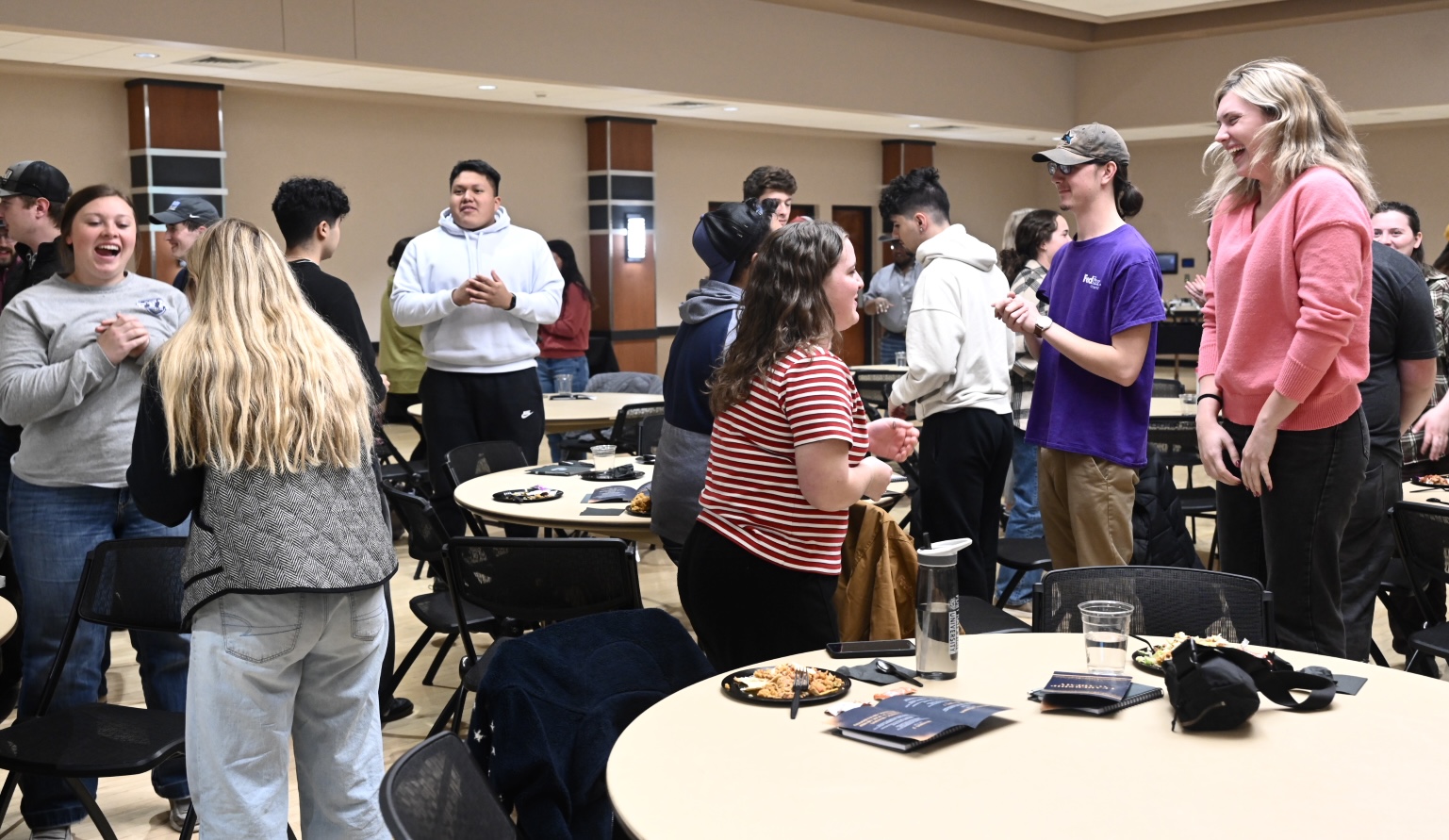By RORY MOORE
Tiger Media Network
Fort Hays State University Student Engagement hosted a Leadership Academy inside the Memorial Union Ballroom on Wednesday. The conference was led by Lincoln Elementary School principal Kerri Lacy, who spoke on developing core leadership skills and connecting with others as an individual or organization.
Lacy, a Fort Hays graduate with two degrees, had all attendees perform playful activities with a partner, like counting to three with one another and jumping up and down as part of her leadership lecture.
“Leaders have to be vulnerable,” she told the audience. “You felt silly and you were out of your comfort zone. Sometimes, leadership takes us out of our comfort zone.”
She attributed much of those lessons to her work in education.
“As the leader of that building, I need to be engaged,” Lacy said. “I need to be involved and know my kids. When every kiddo’s parent drops them off, that tells me a couple of things. If Grandma’s dropping them, and the kiddo’s a little bit off, that tells me something’s going on at that home that maybe we need to be aware of. Kids getting in trouble, crying, won’t eat lunch, different things.”
Lacy used her observations to explain that leadership skills apply to any industry.
“Leadership in education is no different than leadership in any of your organizations or anything that you do,” she said. “Effective leadership is the ability to inspire, guide, and motivate a team or organization towards achieving its goals through strategic vision, strong communication, and a positive influence.”
An integral element of leadership that Lacy emphasized was the positivity that a leader can have.
“No matter what you feel like when you are leading your group, you need to be positive,” she said. “If you’re not positive as the leader, what happens to that group?”
She corresponded this with the most fundamental tools a leader can be equipped with.
“The key characteristics [of a leader] are effective leadership, strategic decision, clearly articulates organizational goals, develops comprehensive strategies, provides direction and purpose, and communication,” Lacy said. “Communicate expectations clearly, listen actively and empathetically, and promote transparent and open dialog.”
Another characteristic of leadership Lacy shared was using blunt communication with another and working past personal issues.
“It’s okay to say what you don’t like about me,” she said. “It’s okay that maybe you don’t like me. But you know what? We’re in this with the same goal. We’re in this to do the same thing so we get along. You may not like that person, but you learn to work with them.”
While leadership is a critical component of collaboration, Lacy notes that in the end, goals can be achieved as a collective group when connection is established.
“You have to learn how to understand people and build strong interpersonal relationships,” she said. “I have your back and you have my back. That’s what leadership is, and leadership is a united force. We are a team, and I am a team member.”






